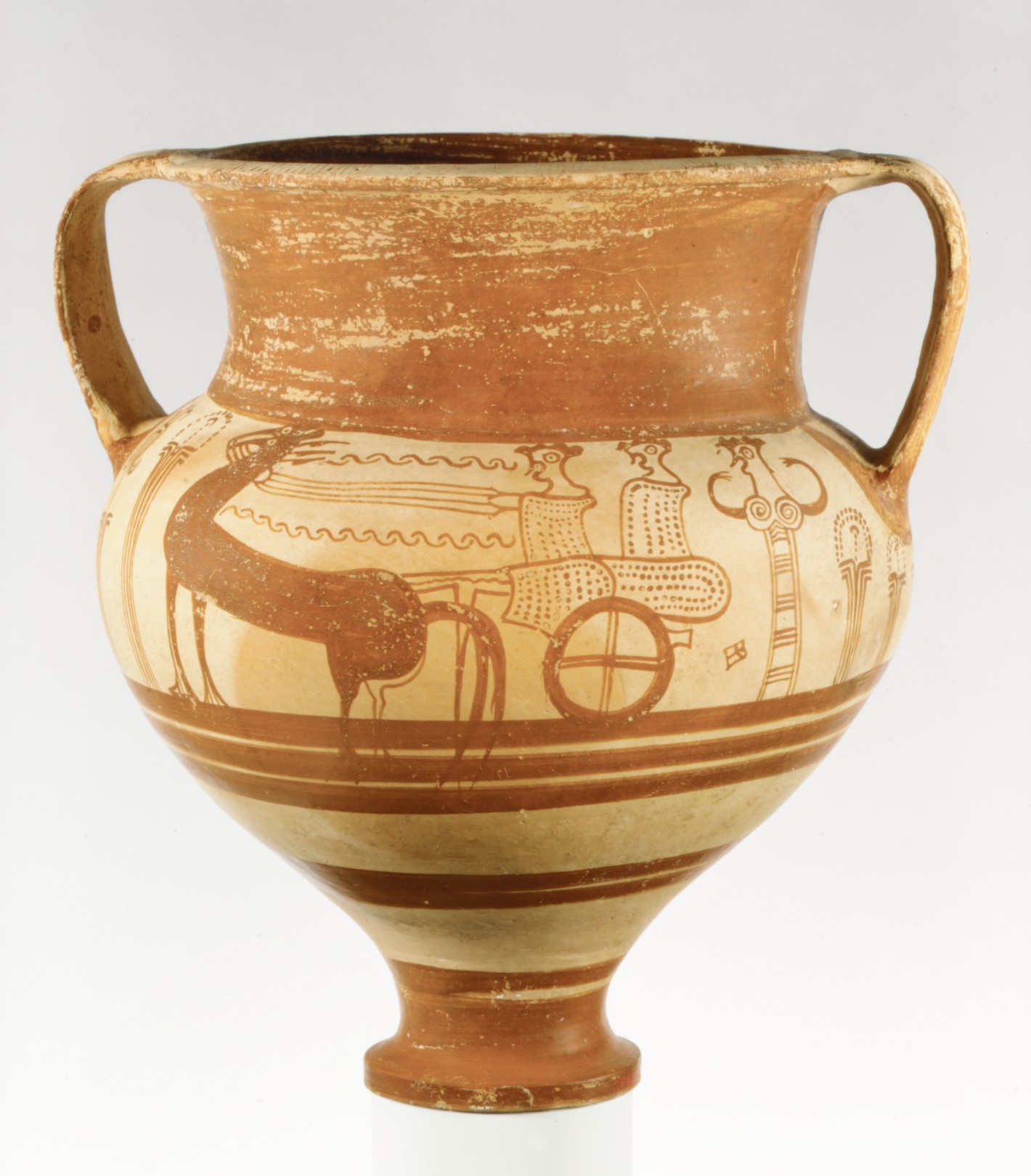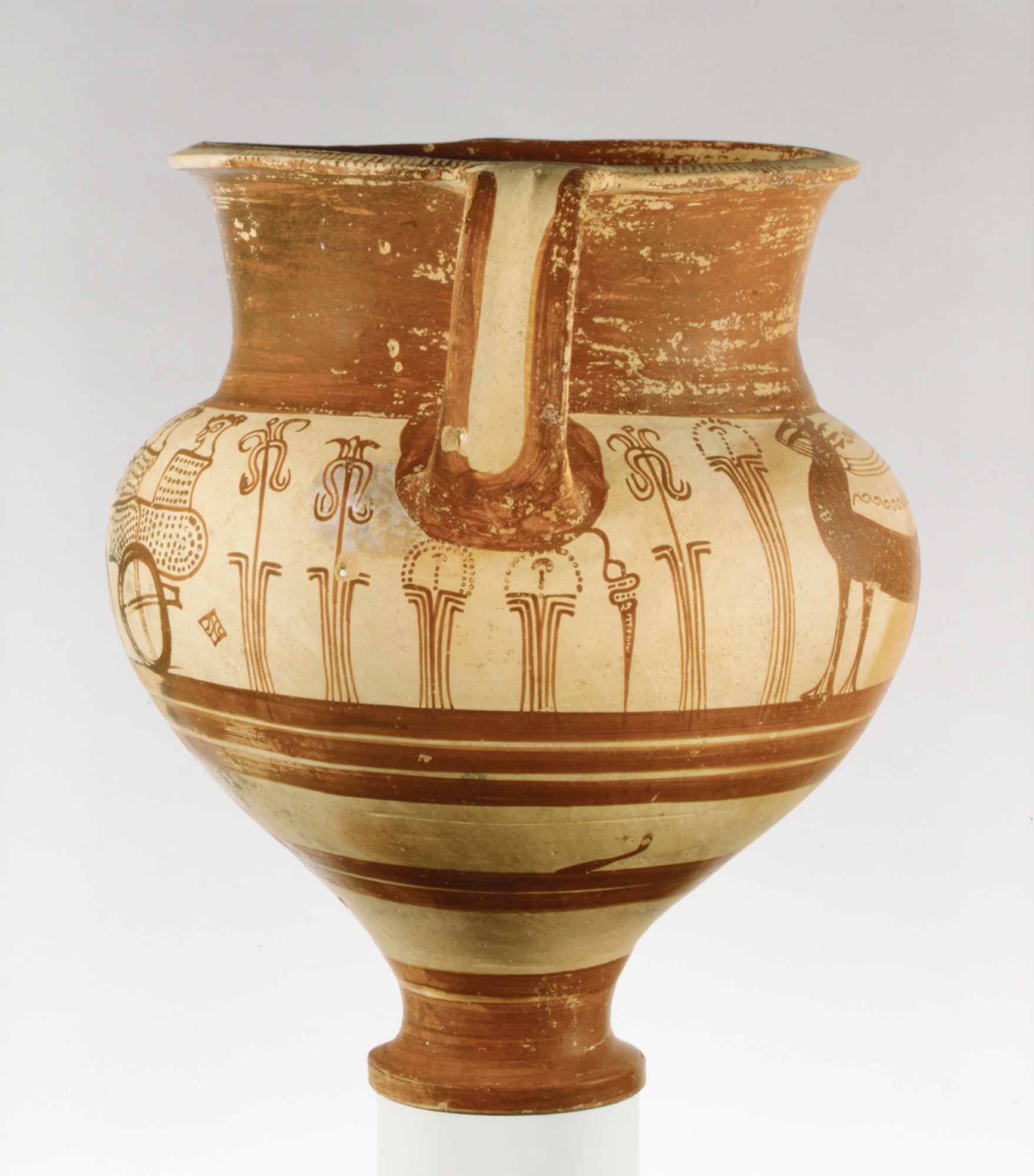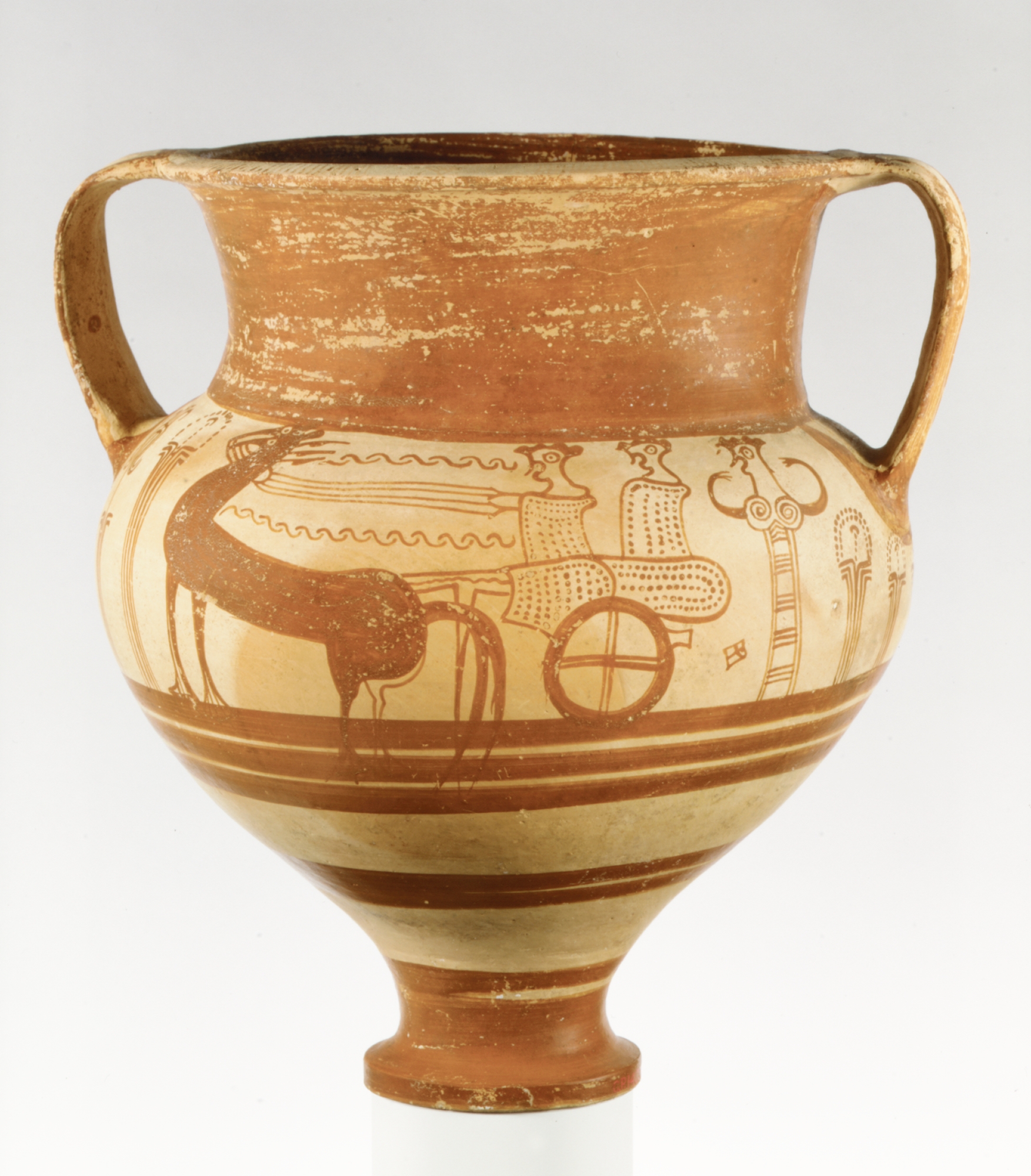Terracotta chariot krater
Mycenaean kraters depicting chariot scenes are known primarily from Cyprus, where this vase was discovered. Recent excavations and scientific analysis, however, suggest that such vessels were made in the Argolid, a region of the Peloponnese, for export to the island. Found almost exclusively in tombs, they may have been used in rituals before burial. The female figure behind the chariot has been interpreted as a mourner, a goddess, or even a cult statue of a deity.
#1004. Terracotta chariot krater, Part 1
-
1004. Terracotta chariot krater, Part 1
-
1440. Terracotta chariot krater, Part 2
Playlist
Due to rights restrictions, this image cannot be enlarged, viewed at full screen, or downloaded.
This artwork is meant to be viewed from right to left. Scroll left to view more.






